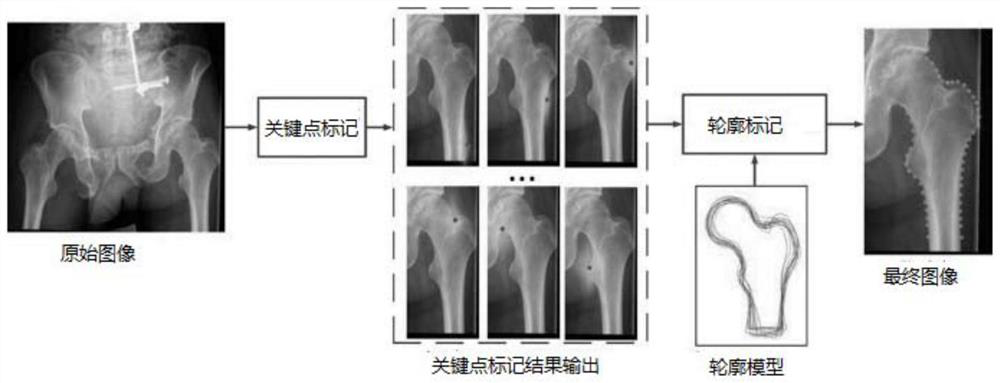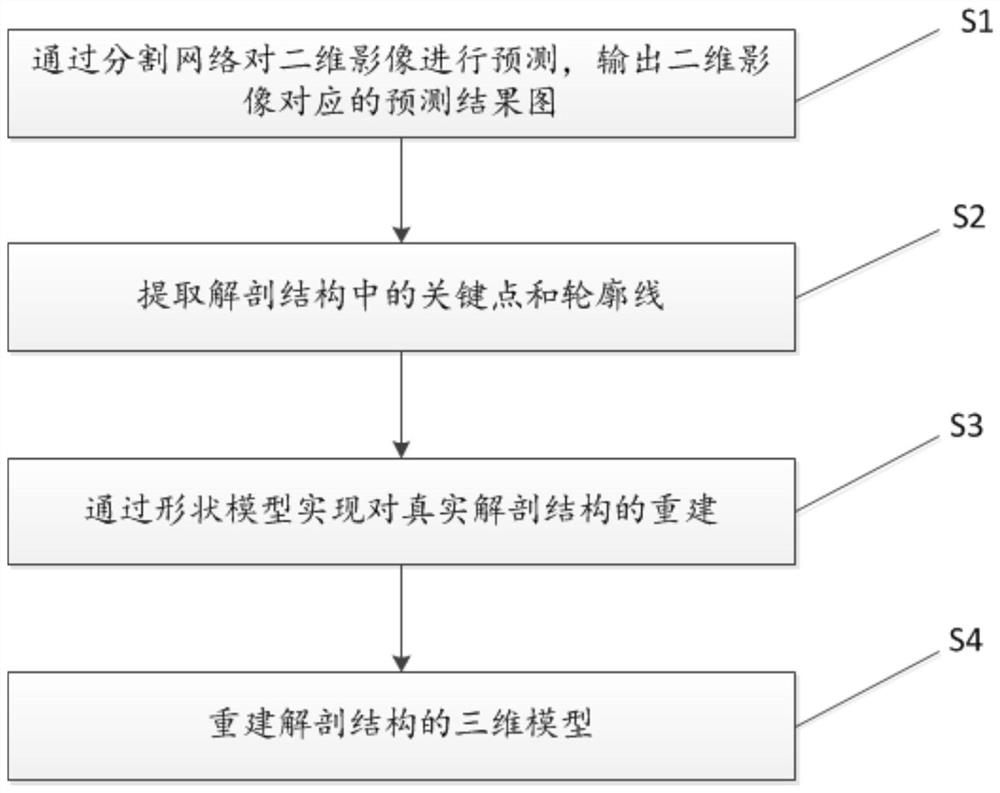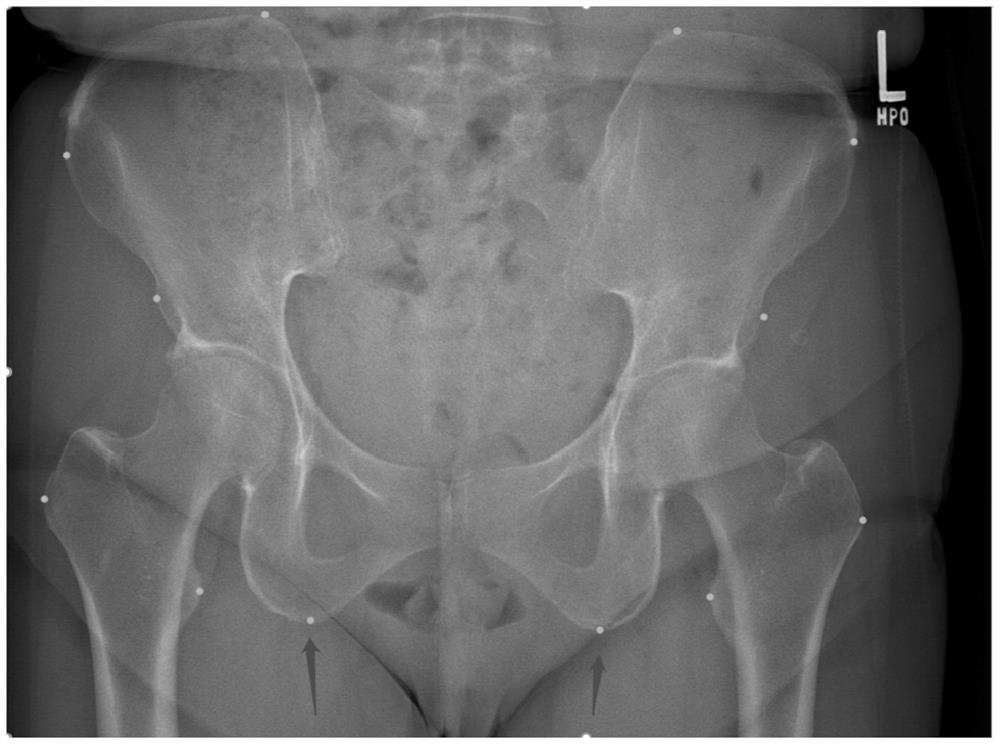Automatic identification and model reconstruction method for anatomical features in medical image
A technology of anatomical features and medical images, applied in the field of intelligent analysis of medical images, can solve the problems of unexploration, lack of generality and coverage, and achieve the effect of reducing burden, saving time and accurate calculation results.
- Summary
- Abstract
- Description
- Claims
- Application Information
AI Technical Summary
Problems solved by technology
Method used
Image
Examples
no. 1 example
[0070] Such as figure 2 As shown, this embodiment provides a method for automatic recognition of anatomical features and model reconstruction in medical images, including the following steps:
[0071] S1: Input the two-dimensional image to be segmented into the segmentation network for prediction, agree in advance the type of anatomical structure to be recognized, classify and predict each pixel of the input two-dimensional image, and form a prediction result map, wherein, the The segmentation network is obtained by pre-collecting a large number of the two-dimensional images and performing pixel-level labeling, followed by neural network training.
[0072] 1. Predict and mark the 2D image input segmentation network to be segmented
[0073] Specifically, in this embodiment, the purpose of step S1 is to use different labels to predict and mark each different type of anatomical structure in the two-dimensional image, so that the processed prediction results can be clearly ident...
no. 2 example
[0148] The steps of this embodiment are basically the same as those of the first embodiment, the difference is that in step S1, it also includes processing the prediction result graph, specifically:
[0149] 1. Eliminate anxiety
[0150] Perform denoising processing on the prediction result map, and perform connectivity analysis on all pixels classified into this category for all anatomical structure types except the background category. If multiple connected regions are analyzed, find and retain The largest connected region, removing other connected regions.
[0151] Specifically, for the pixels corresponding to each type of label, a largest connected region is found, and other connected regions are deleted. The largest connected region is each type of label, corresponding to an anatomical structure marked.
[0152] 2. Remove jagged points
[0153] Use morphological operations on connected regions to remove small jagged points, as the final prediction result map.
[0154] ...
no. 3 example
[0156] This embodiment combines the methods in the first embodiment and the second embodiment, and uses a specific example to explain the content of the present invention by taking the lower extremity, which accounts for a relatively high proportion in orthopedic clinical research, as an example.
[0157] 1. Training of Segmentation Network
[0158] (1) Collect 90 full-length Dicom images of lower extremities, convert them into 16-bit PNG format after anonymization.
PUM
 Login to View More
Login to View More Abstract
Description
Claims
Application Information
 Login to View More
Login to View More - R&D
- Intellectual Property
- Life Sciences
- Materials
- Tech Scout
- Unparalleled Data Quality
- Higher Quality Content
- 60% Fewer Hallucinations
Browse by: Latest US Patents, China's latest patents, Technical Efficacy Thesaurus, Application Domain, Technology Topic, Popular Technical Reports.
© 2025 PatSnap. All rights reserved.Legal|Privacy policy|Modern Slavery Act Transparency Statement|Sitemap|About US| Contact US: help@patsnap.com



